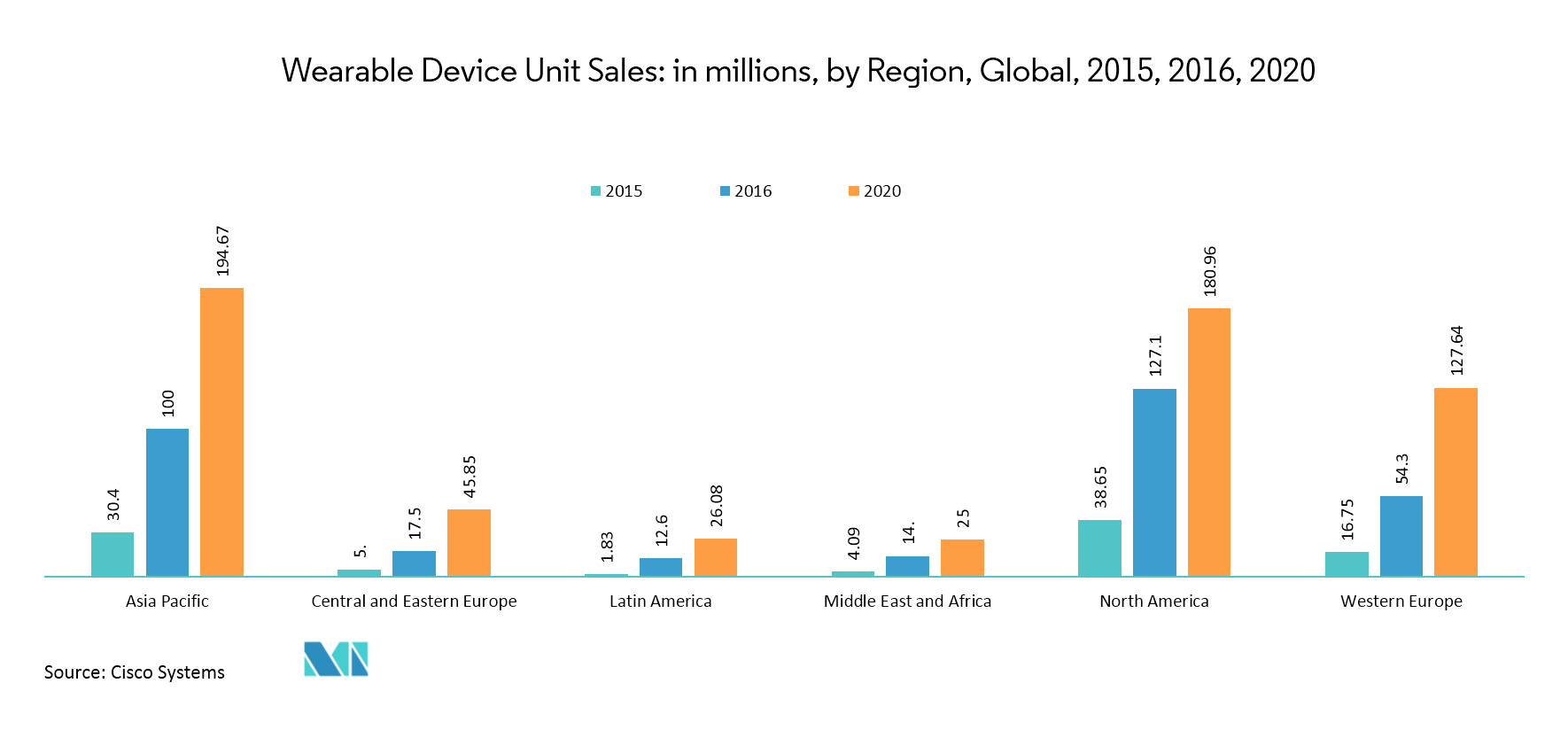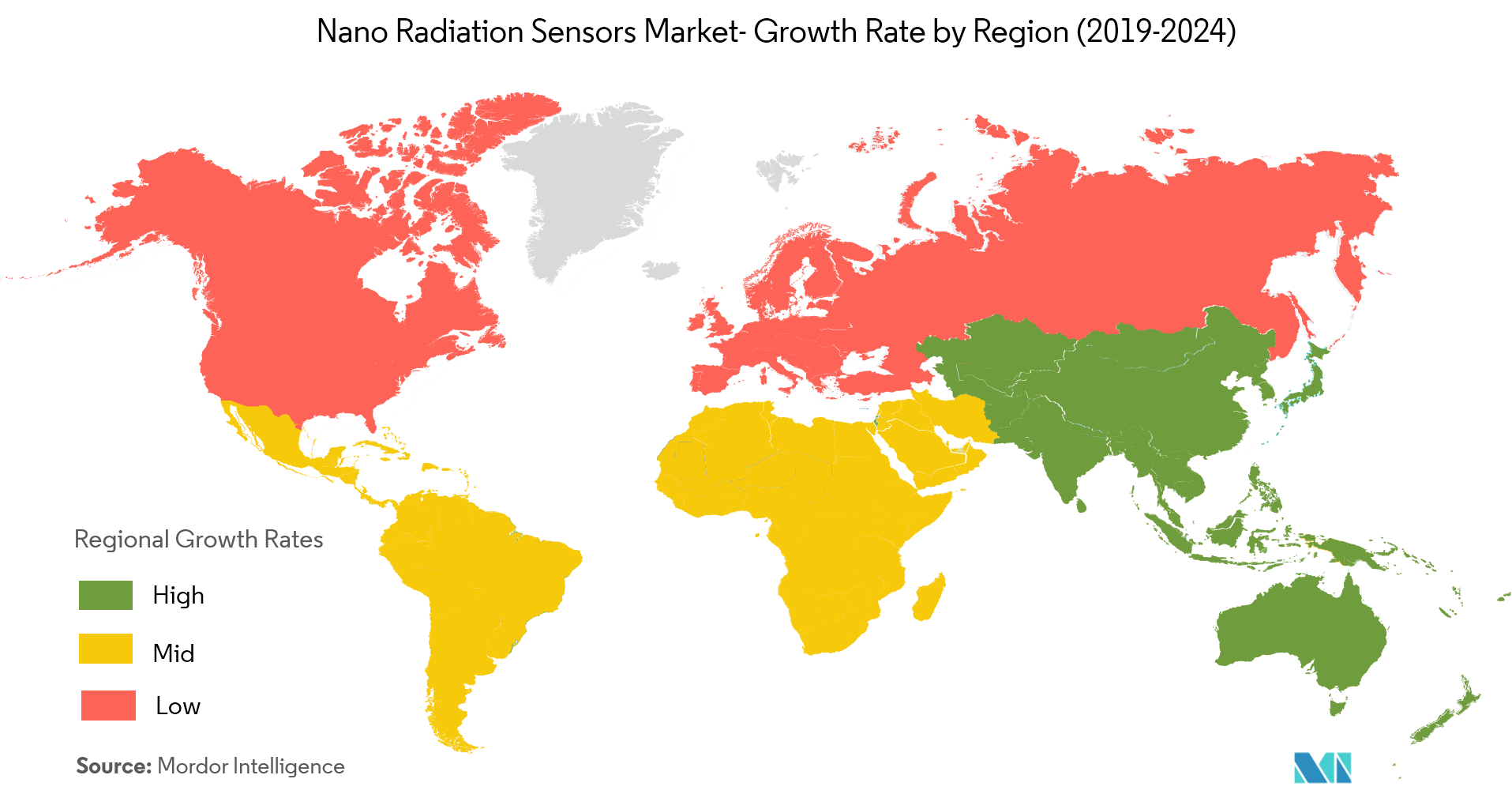
| Study Period | 2019 - 2030 |
| Base Year For Estimation | 2024 |
| Forecast Data Period | 2025 - 2030 |
| CAGR | 6.72 % |
| Fastest Growing Market | Asia Pacific |
| Largest Market | North America |
| Market Concentration | Medium |
Major Players
*Disclaimer: Major Players sorted in no particular order |
Nano Radiation Sensors Market Analysis
The Nano Radiation Sensors Market is expected to register a CAGR of 6.72% during the forecast period.
- >
- The promise of miniaturization constituted the beginning of the field of nanotechnology. This trend has proliferated across the manufacturing of ever-smaller mechanical, optical, medical, and electronic products and devices.
- Manufacturing of nanosensors is application specific, due to which there are multiple challenges associated with it.
- Further, the availability of advanced instruments, such as automated reader instruments, electronic radiation measuring instruments, alarm badges, and thermoluminescent dosimeters (TLD), is increasing the range of applications for the detection and monitoring devices. Technological developments in the segment have resulted in the development of more accurate detectors and monitors, and have led to the introduction of portable, durable, and economical devices, augmenting the growth of the market studied.
- The future of the market is buoyed by the increasing number of startups investing in this field as well as massive R&D investments, initiatives taken by the government by funding for new nanotechnology device discovery, growing demand for radiological medical applications, and increasing investments for homeland security. They offer good quantum efficiency and can determine the energy of incident radiation as well as the intensity. Such kind of scintillation counter can mainly operate in air or vacuum.
Nano Radiation Sensors Market Trends
Consumer Electronics End User to Account for Largest Share
- End users across nations are increasingly demanding high-performance devices with reliable and highly portable computing platforms. Connectivity over wireless networks such as Wi-Fi, 3G, 4G, and Bluetooth to facilitate easy data exchange and transfer has been increasing rapidly.
- This has led to wireless computing devices, such as tablets, smartphones, wearables, and sensors, flooding the market. Wireless computing devices require a high level of integration, which, in turn, is propelling the development of a number of new designs to support multiple applications on a single platform. In such a market scenario, the need for innovative, low-cost testing solutions can facilitate cost efficiencies and ensure quick market entry of the product.
- Regional factors have impacted production facility investments. For instance, America’s tariffs on goods made in China influenced semiconductor companies (SK Hynix,, and Mitsubishi Electric), to move their production back to Asia, thus making Asia, a potential market for nanosensors.
United States to Account for Significant Share
- The United States is the largest market for nano radiation sensors in the global market. The country has a high demand from almost all the end-user segments alike, which is one of the major driving factors for the increasing demand from the country. However, the major contributors to the demand include healthcare, automotive and industrial, aerospace and defense, and power generation sectors.
- The healthcare sector in the country is one of the major sources of demand for nano radiation sensors. Immense research and clinical trial activity in the country always keeps the demand from this sector high. In fact, according to the Pharmaceutical Research and Manufacturers of America (PhRMA), pharmaceutical companies in the United States spent a record USD 71.4 billion on research and development activities in 2017 (over 26%, spent on Phase I, II, and III clinical trials, by each company involved in clinical trials).
- Also, the United States comprises the most significant market for advanced defense equipment and services in the world. According to the General Aviation Manufacturers Association (GAMA), as of 2017, the country produced more than 1596 general aviation airplanes (do not involve military aircraft).
- Further, the United States is the world's largest producer of nuclear energy with 98 operating nuclear power reactors as of October 2018. It is estimated that the country accounts for approximately 30% of global nuclear power generation capacity. In fact, as of 2017, the nuclear power generation segment was responsible for 20% of the total electricity output.
- Over the forecast period, such initiatives are expected to open new market opportunities to the nano radiation sensors in the power generation sector.
Nano Radiation Sensors Industry Overview
- The major factors governing this force are sustainable competitive advantage through innovation, levels of market penetration, levels of advertising expense power of competitive strategy, and firm concentration ratio. Currently, nano radiation sensors have limited market penetration, which presents a huge market opportunity for the existing players, as well as the outsiders who are willing to enter the market space.
- However, the existing market players have the advantage of a considerable head start over the new entrants in the market. With great prospects, growing investments, and supportive government initiatives, the competition among the existing players is likely to become high.
- Some of the major players inNano Radiation Sensors Market are Robert Bosch, Honeywell, GE. Some of the key developments inNano Radiation Sensors Market are as follows:
- Analog Devices Inc. announced a new sensor interface IC, which enables the next generation of intelligent electrochemical sensors. The new ADuCM355 combines the high-performance, ultra-low power, small-form-factor, and the advanced feature set is needed to enable the next generation portable gas detectors.
- Thermo Fisher Scientific and Symphogen, a clinical-stage antibody oncology-focused company, entered into a two-year collaborative partnership to deliver validated, platform workflows for simplified characterization and quality monitoring of complex therapeutic proteins.
Nano Radiation Sensors Market Leaders
-
Baker Hughes (General Electric)
-
Robert Bosch GmbH
-
Toshiba Corporation
-
Rae Systems Inc. (Honeywell International Inc.)
-
Thermo Fisher Scientific Inc.
- *Disclaimer: Major Players sorted in no particular order

Nano Radiation Sensors Industry Segmentation
Carbon nanotube-based sensors are particularly suitable and promising for chemical and radiation detection because the technology can be used to fabricate gas or liquid chemical sensors that have extremely low power requirements and are versatile and ultra-miniature in size, with added cost benefits.
| By Type | Scintillation Detectors | ||
| Solid-state Detectors | |||
| By Application | Automotive | ||
| Consumer Electronics | |||
| Healthcare | |||
| Industrial | |||
| Oil and Gas | |||
| Power Generation | |||
| Other Applications | |||
| Geography | North America | US | |
| Canada | |||
| Europe | Germany | ||
| UK | |||
| France | |||
| Russia | |||
| Spain | |||
| Italy | |||
| Rest of Europe | |||
| Asia-Pacific | China | ||
| Japan | |||
| India | |||
| Rest of Asia-Pacific | |||
| Latin America | Brazil | ||
| Argentina | |||
| Mexico | |||
| Rest of Latin America | |||
| Middle East &Africa | UAE | ||
| Saudi Arabia | |||
| South Africa | |||
| Rest of Middle East & Africa | |||
Nano Radiation Sensors Market Research FAQs
What is the current Nano Radiation Sensors Market size?
The Nano Radiation Sensors Market is projected to register a CAGR of 6.72% during the forecast period (2025-2030)
Who are the key players in Nano Radiation Sensors Market?
Baker Hughes (General Electric), Robert Bosch GmbH, Toshiba Corporation, Rae Systems Inc. (Honeywell International Inc.) and Thermo Fisher Scientific Inc. are the major companies operating in the Nano Radiation Sensors Market.
Which is the fastest growing region in Nano Radiation Sensors Market?
Asia Pacific is estimated to grow at the highest CAGR over the forecast period (2025-2030).
Which region has the biggest share in Nano Radiation Sensors Market?
In 2025, the North America accounts for the largest market share in Nano Radiation Sensors Market.
What years does this Nano Radiation Sensors Market cover?
The report covers the Nano Radiation Sensors Market historical market size for years: 2019, 2020, 2021, 2022, 2023 and 2024. The report also forecasts the Nano Radiation Sensors Market size for years: 2025, 2026, 2027, 2028, 2029 and 2030.
Our Best Selling Reports
Africa Nuclear Imaging Industry Report
Statistics for the 2025 Nano Radiation Sensors market share, size and revenue growth rate, created by Mordor Intelligence™ Industry Reports. Nano Radiation Sensors analysis includes a market forecast outlook for 2025 to 2030 and historical overview. Get a sample of this industry analysis as a free report PDF download.






